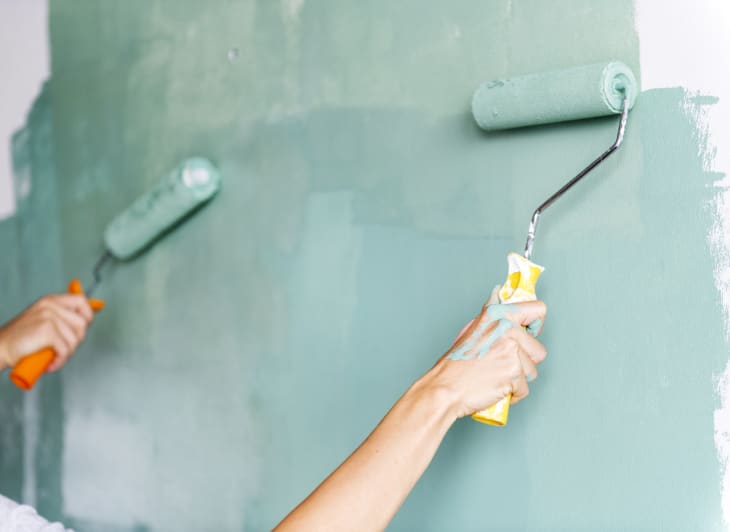Why Is My Paint Not Sticking to the Wall — and How Do I Fix It?
Why Is My Paint Not Sticking to the Wall
There’s nothing more frustrating than putting time and effort into painting, only to see it peel, bubble, or slide right off the wall. If your paint isn’t sticking, you’re not alone — this is one of the most common DIY decorating issues.
In this guide, we’ll walk you through why paint sometimes doesn’t adhere properly, how to fix it, and most importantly, how to prevent it happening again. Let’s get your walls looking as fresh and flawless as they should be!

Why Doesn’t Paint Stick to Walls?
Several culprits can cause paint to fail — and most have to do with what’s on or under the surface:
Surface Contaminants - Dust, grease, old wallpaper paste, or even the residue from air fresheners can prevent paint from sticking. Bathrooms and kitchens are particularly prone to grease or condensation build-up.
Inadequate Cleaning or Prep - If the wall wasn’t washed or lightly sanded beforehand, paint may have nothing to grab onto. A shiny or glossy surface, especially, will repel standard emulsion.
Porous or Powdery Surfaces - New plaster, chalky paint, or bare surfaces can be too absorbent, causing paint to soak in unevenly or dry too fast to adhere properly.
Extreme Temperatures or Humidity - If you paint in a very cold, hot, or humid room, the paint may not dry correctly, leading to flaking or bubbling.
Wrong Paint for the Job - Using emulsion over gloss, or paint not suited for the material (e.g. wood, metal, bathroom tiles), can result in poor adhesion.
How to Fix Peeling or Non-Sticking Paint
You can save the project — but the key is correcting the surface first.
Step-by-Step Fix
-
Scrape Off Loose Paint
Use a putty knife or scraper to remove flaking, peeling, or bubbling paint. -
Clean the Area
Wash the surface with sugar soap or a mild detergent to remove grease or dirt. -
Sand Smooth
Lightly sand any rough or glossy areas so the new paint has grip. -
Prime Problem Areas
If the surface is porous (e.g. fresh plaster), apply a mist coat (50/50 water and emulsion) or a proper stain-block or adhesion primer. Ask us in-store for recommendations! -
Repaint with the Right Product
Choose the correct paint for the surface.

3. How to Prevent It Happening Again
- Always clean and lightly sand the surface before painting.
- Use the correct primer for difficult surfaces like tiles or melamine.
- Don’t skip the mist coat on fresh plaster!
- Avoid painting in cold or very humid rooms.
- Read the paint tin — different finishes require different prep!
Need More Help?
Visit our stores
If you're not sure which product to use or whether you need a primer, pop into one of our stores or get in touch — our team are always happy to help you get the best results.
Final Thought
Why Is My Paint Not Sticking to the Wall
Painting can be a satisfying and affordable way to refresh your home — but only if the paint sticks! With the right prep and products, you can avoid the most common painting pitfalls and get a finish that lasts.
Related Articles
Paper, Panels and Pictures - 3 Ways With Wallpaper
Read on for our tips of 3 ways to enjoy some of the latest wallpaper designs without taking up your whole room, and find out what the wallpaper trends are for 2022.
Which Tools Give the Best Results: Brushes, Rollers or Sprayers?
When you're planning a painting project—whether it's refreshing a living room, upcycling a piece of furniture, or applying protective coatings to a commercial building—choosing the right application tool can dramatically affect the final result.








